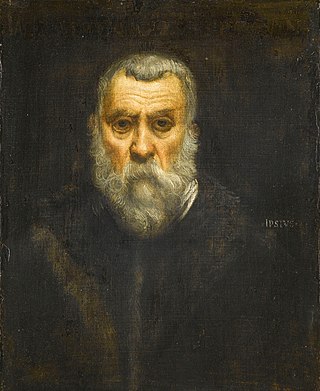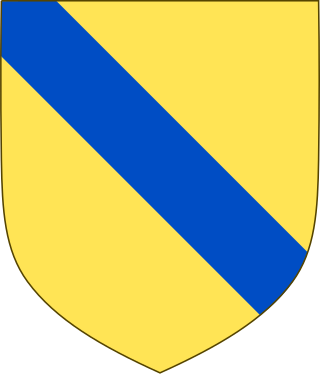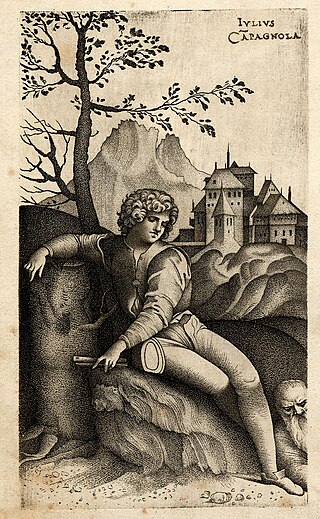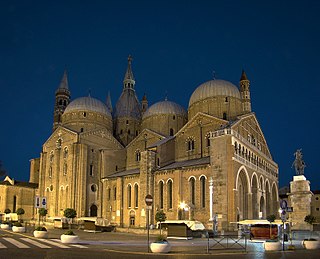
Anthony of Padua, OFM or Anthony of Lisbon was a Portuguese Roman Catholic priest and friar of the Franciscan Order.

Tiziano Vecelli or Vecellio, known in English as Titian, was an Italian (Venetian) painter of the Renaissance, considered the most important member of the 16th-century Venetian school. He was born in Pieve di Cadore, near Belluno. During his lifetime he was often called da Cadore, 'from Cadore', taken from his native region.

Filippino Lippi was an Italian painter working in Florence, Italy during the later years of the Early Renaissance and first few years of the High Renaissance.

Paolo Caliari, known as Paolo Veronese, was an Italian Renaissance painter based in Venice, known for extremely large history paintings of religion and mythology, such as The Wedding at Cana (1563) and The Feast in the House of Levi (1573). Included with Titian, a generation older, and Tintoretto, a decade senior, Veronese is one of the "great trio that dominated Venetian painting of the cinquecento" and the Late Renaissance in the 16th century. Known as a supreme colorist, and after an early period with Mannerism, Paolo Veronese developed a naturalist style of painting, influenced by Titian.

Tintoretto was an Italian painter identified with the Venetian school. His contemporaries both admired and criticized the speed with which he painted, and the unprecedented boldness of his brushwork. For his phenomenal energy in painting he was termed Il Furioso. His work is characterised by his muscular figures, dramatic gestures and bold use of perspective, in the Mannerist style.

The House of Morosini was a powerful Venetian noble family that gave many doges, statesmen, generals, and admirals to the Republic of Venice, as well as cardinals to the Church.

Giulio Campagnola was an Italian engraver and painter, whose few, rare, prints translated the rich Venetian Renaissance style of oil paintings of Giorgione and the early Titian into the medium of engraving; to further his exercises in gradations of tone, he also invented the stipple technique, where multitudes of tiny dots or dashes allow smooth graduations of tone in the essentially linear technique of engraving; variations on this discovery were to be of huge importance in future printmaking. He was the adoptive father of the artist Domenico Campagnola.

The Pontifical Basilica of Saint Anthony of Padua is a Catholic church and minor basilica in Padua, Veneto, Northern Italy, dedicated to St. Anthony of Padua.

Domenico Campagnola was an Italian painter and printmaker in engraving and woodcut of the Venetian Renaissance, but whose most influential works were his drawings of landscapes.

Italian Renaissance painting is the painting of the period beginning in the late 13th century and flourishing from the early 15th to late 16th centuries, occurring in the Italian Peninsula, which was at that time divided into many political states, some independent but others controlled by external powers. The painters of Renaissance Italy, although often attached to particular courts and with loyalties to particular towns, nonetheless wandered the length and breadth of Italy, often occupying a diplomatic status and disseminating artistic and philosophical ideas.

Giuseppe Alberti was an Italian painter of the Baroque period. He was born at Cavalese, in what was then Austrian Tyrol. After having studied medicine at Padua he decided to become a painter and architect. He worked under Pietro Liberi in Venice, then in Rome, and finally settled at Trieste. Alberti died at Cavalese.
Events from the year 1511 in art.
Morosini is an Italian surname. Notable people with the surname include:

Andrea del Sarto was an Italian painter from Florence, whose career flourished during the High Renaissance and early Mannerism. He was known as an outstanding fresco decorator, painter of altar-pieces, portraitist, draughtsman, and colorist. Although highly regarded during his lifetime as an artist senza errori, his renown was eclipsed after his death by that of his contemporaries Leonardo da Vinci, Michelangelo, and Raphael.

Venetian painting was a major force in Italian Renaissance painting and beyond. Beginning with the work of Giovanni Bellini and his brother Gentile Bellini and their workshops, the major artists of the Venetian school included Giorgione, Titian, Tintoretto (1518–1594), Paolo Veronese (1528–1588) and Jacopo Bassano (1510–1592) and his sons. Considered to give primacy to colour over line, the tradition of the Venetian school contrasted with the Mannerism prevalent in the rest of Italy. The Venetian style exerted great influence upon the subsequent development of Western painting.

Sergio Rossetti Morosini is a Brazilian-American Scholar, artist and author of Venetian extraction who served as Brazil's Cultural attaché in New Orleans and is dedicated to preserving the Atlantic Forest and restoring the art in stone of New York City Landmarks.
Giovanni Battista Ciolina was an Italian neo-impressionist and divisionist painter.

The Scuola del Santo or Scoletta was the headquarters of the Archconfraternity of St Anthony of Padua. It overhangs the churchyard of Basilica of Saint Anthony of Padua, next door to the St. George's Oratory.

The San Francesco Altarpiece is a c.1517 oil on canvas painting by Romanino, painted for and still on show in the church of San Francesco, Brescia.

















